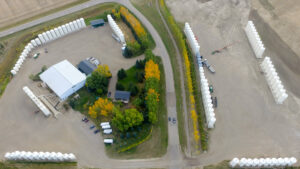Buying a new phone is a no-brainer for most people, as they can reap the benefits right after they take it out of the box.
Buying a new piece of processing equipment — especially one that goes beyond simple seed cleaning and into the realm of food processing — isn’t like that. It takes an early adopter’s mindset to really realize the benefits. That mindset is characterized by the following:
There’s a desire to distinguish oneself in the marketplace. When something proves successful, word tends to spread rapidly and brings about major change.
Take the introduction of colour sorters. Early adopters in the seed industry made investments in this technology, perhaps attracted by the allure of having a cutting-edge tool to attract business initially. However, they didn’t necessarily foresee how it would directly enhance the quality of their product or benefit their facilities. Nevertheless, they took the leap, not out of pure curiosity, but because they saw it as an opportunity to set themselves apart from the pack.
Nexeed recently began offering BoMill protein separator equipment. By sorting all individual kernels in a batch of grains based on protein content, it improves process efficiency and strengthens quality assurance.
If you’re operating a flour mill or any facility looking to incorporate this technology, it’s essential to consider the practical implications. Take a malt facility as an example. Typically, malt facilities need to manage the protein content of their barley to keep it below their maximum tolerances. Early adopter maltsters are using this technology as a new tool to broaden the pool of barley they can work with.
This may create some new operational complexities and require adjustments to internal processes, but it leads to an immediate new competitive advantage.
This prompts us to consider the broader potential of newer technologies in the processing space. While we understand their primary function, there’s always the question of what else they can do. It’s about exploring the full range of possibilities and uncovering additional benefits that may not be immediately apparent.
Of course, this is different for everybody. Early adopters take risks, but not every trend is worth an immediate investment. Let your own personal situation guide the way, but don’t forget to ask yourself if there might be a benefit to think outside the box and adopt a technology you might have overlooked. It’s usually possible to test an innovative application and get some good insight about what the potential really is.









